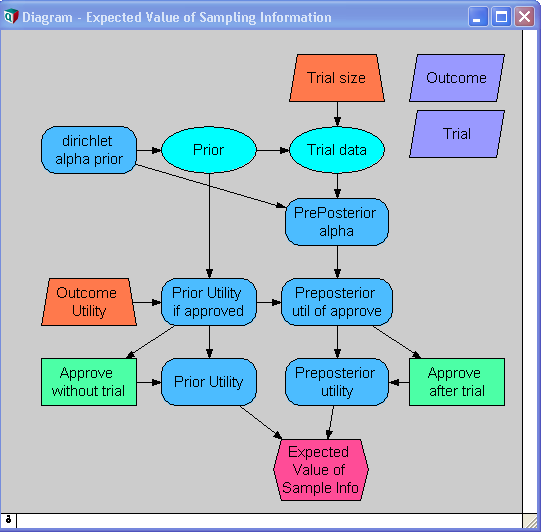In
decision theory
Decision theory or the theory of rational choice is a branch of probability theory, probability, economics, and analytic philosophy that uses expected utility and probabilities, probability to model how individuals would behave Rationality, ratio ...
, the expected value of sample information (EVSI) is the expected increase in utility that a decision-maker could obtain from gaining access to a
sample of additional observations before making a decision. The additional information obtained from the
sample may allow them to make a more informed, and thus better, decision, thus resulting in an increase in expected utility. EVSI attempts to estimate what this improvement would be before seeing actual sample data; hence, EVSI is a form of what is known as ''preposterior analysis''. The use of EVSI in decision theory was popularized by
Robert Schlaifer and
Howard Raiffa
Howard Raiffa ( ; January 24, 1924 – July 8, 2016) was an American academic who was the Frank P. Ramsey Professor (Emeritus) of Managerial Economics, a joint chair held by the Business School and Harvard Kennedy School at Harvard University. He ...
in the 1960s.
Formulation
Let
:
It is common (but not essential) in EVSI scenarios for
,
and
, which is to say that each observation is an unbiased sensor reading of the underlying state
, with each sensor reading being independent and identically distributed.
The utility from the optimal decision based only on the prior, without making any further observations, is given by
:
If the decision-maker could gain access to a single sample,
, the optimal posterior utility would be
:
where
is obtained from
Bayes' rule:
:
:
Since they don't know what sample would actually be obtained if one were obtained, they must average over all possible samples to obtain the expected utility given a sample:
:
The expected value of sample information is then defined as
:
Computation
It is seldom feasible to carry out the integration over the space of possible observations in E
SIanalytically, so the computation of EVSI usually requires a
Monte Carlo simulation
Monte Carlo methods, or Monte Carlo experiments, are a broad class of computational algorithms that rely on repeated random sampling to obtain numerical results. The underlying concept is to use randomness to solve problems that might be det ...
. The method involves randomly simulating a sample,
, then using it to compute the posterior
and maximizing utility based on
. This whole process is then repeated many times, for
to obtain a
Monte Carlo sample of optimal utilities. These are averaged to obtain the expected utility given a hypothetical sample.
Example
A regulatory agency is to decide whether to approve a new treatment. Before making the final approve/reject decision, they ask what the value would be of conducting a further trial study on
subjects. This question is answered by the EVSI.

The diagram shows an
influence diagram
An influence diagram (ID) (also called a relevance diagram, decision diagram or a decision network) is a compact graphical and mathematical representation of a decision situation. It is a generalization of a Bayesian network, in which not only ...
for computing the EVSI in this example.
The model classifies the outcome for any given subject into one of five categories:
:
And for each of these outcomes, assigns a utility equal to an estimated patient-equivalent monetary value of the outcome.
A decision state,
in this example is a vector of five numbers between 0 and 1 that sum to 1, giving the proportion of future patients that will experience each of the five possible outcomes. For example, a state
 The diagram shows an
The diagram shows an  The diagram shows an
The diagram shows an